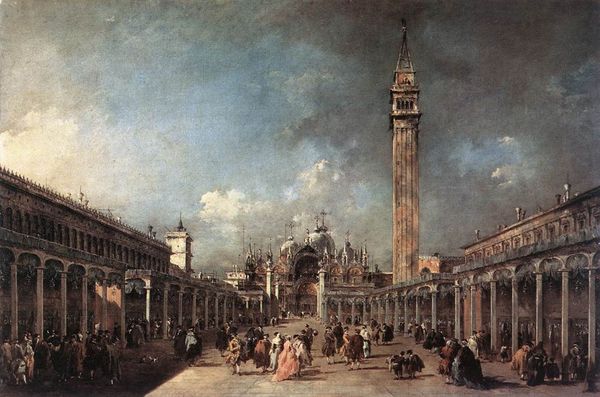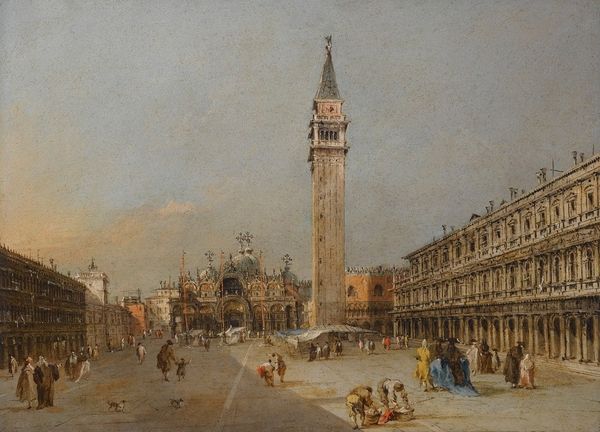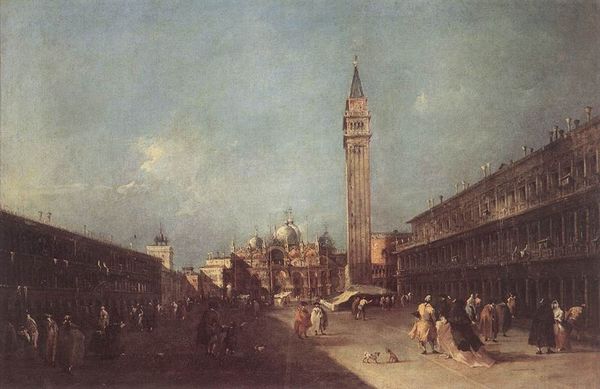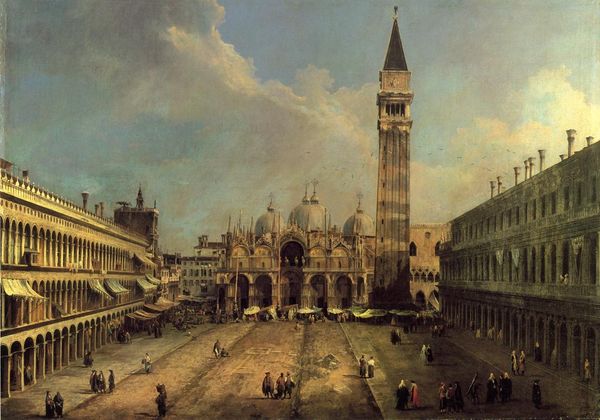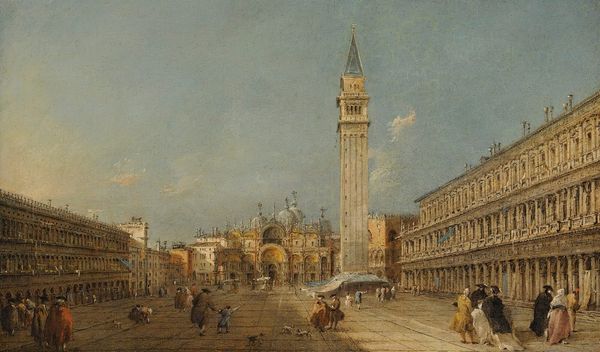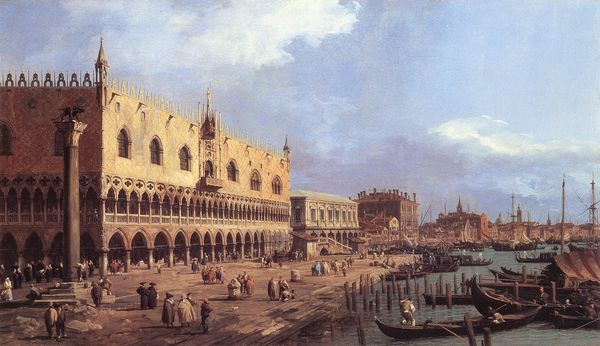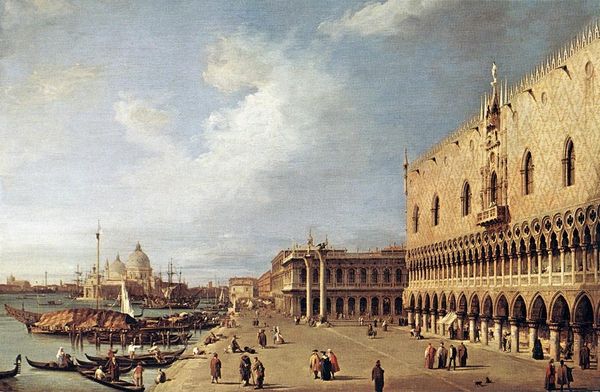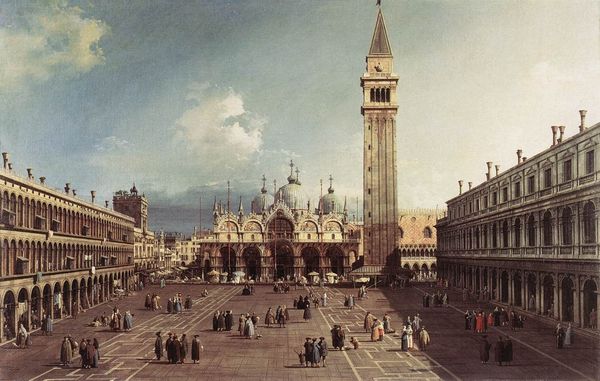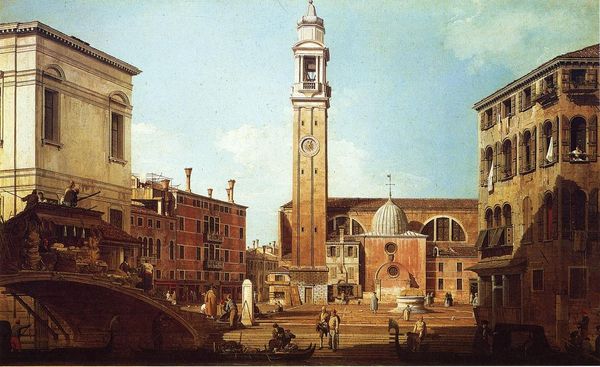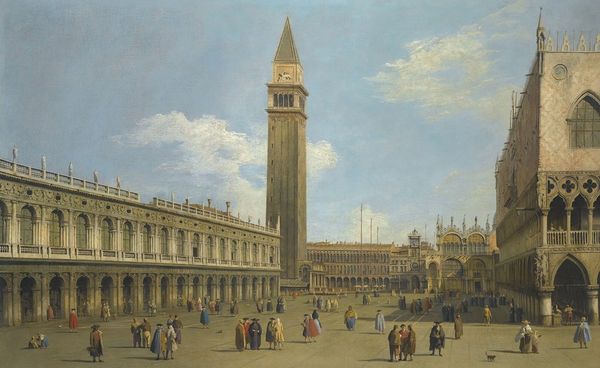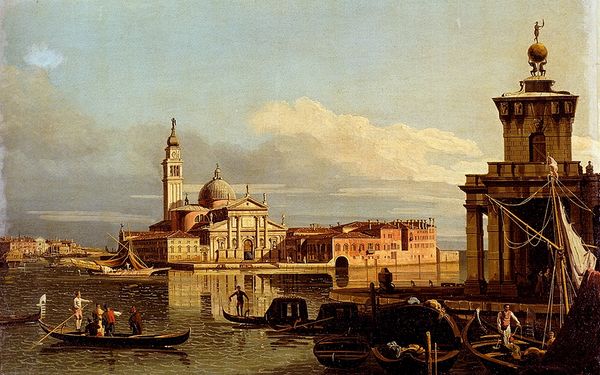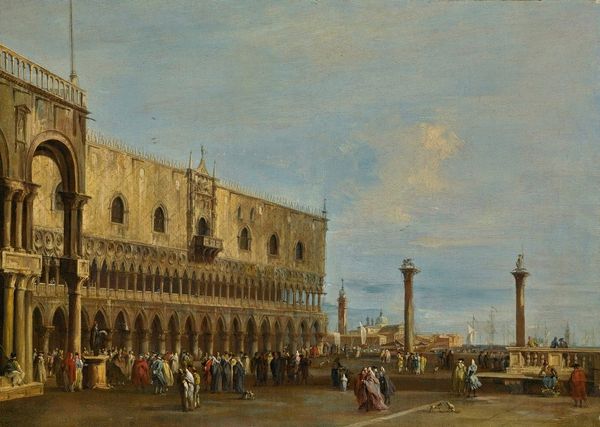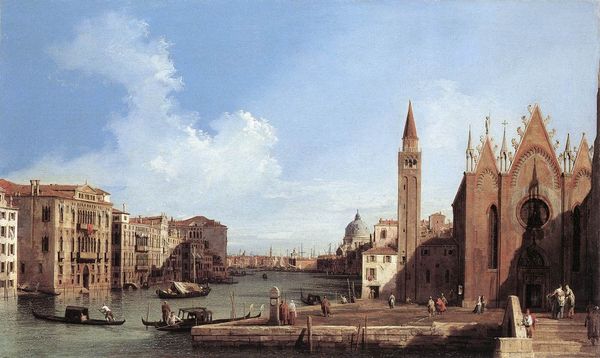
Dimensions: 48 x 78 cm
Copyright: Public domain
Editor: Here we have Francesco Guardi's "The Feast of the Ascension," painted in 1775 using oil paint. It depicts a bustling scene in what looks like Venice, Italy. The way the figures are rendered almost feels like they are part of the architecture, like little decorative elements on a grand stage. What can you tell me about this painting? Curator: For me, it’s about the material conditions that allow this scene to exist. Look at the canvas, the ground pigment suspended in oil, how the hand of Guardi translates Venetian society for consumption. These aren't just ethereal celebrations, these feasts and depictions rely on very material exchanges. Editor: That's interesting. I wouldn't have thought about that initially. So, how does that perspective change how we view the artwork itself? Curator: Well, consider the production of this image. Where did the pigments come from? Who ground them? What kind of labor goes into preparing this canvas? And, furthermore, who consumes it, and to what purpose? Was it commissioned to show Venetian wealth or distributed more widely? Was this to attract trade? This isn't just pretty scenery, it's connected to complex economic systems. The detailed depictions suggest an intended viewership with enough wealth and cultural capital to understand its references and appreciate its detail. Editor: I see, it is about the whole production pipeline, and the market. I guess it makes sense given that Venice was such a trade hub. Does that also play into why the painting style might be how it is? Curator: Precisely. The quick, almost sketchy brushstrokes that give the painting its Rococo flavor could be about speed and efficiency, optimizing production for a growing market of vedute, or views. This wasn't necessarily art for art's sake, but art as a commodity embedded within a larger network of trade and consumption. What do you think about that Rococo element? Editor: Well, now that I think of it, the architecture does seem more impressive. It changes the perception from a documentary one to an artistic rendering and experience. Curator: Exactly, art about capital disguised as art "for pleasure." Editor: That gives me a whole new appreciation and understanding for this painting. I didn’t realize just how much context influences the artist's choices and what we get to see now.
Comments
No comments
Be the first to comment and join the conversation on the ultimate creative platform.
